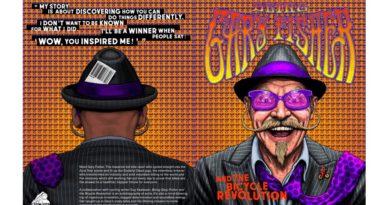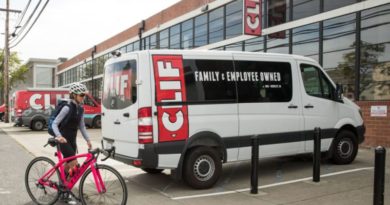OPINION: Get ready for the great E-bike Boom of 2019.
Are you all set for the great UK e-bike boom of 2019? Actually to tell the truth it won’t quite be a boom. Not in the sense that we had the BMX boom, the MTB boom and the Road boom – but we should see some pretty steady and consistent growth in this area.
There are quite a number of growth factors which should drive sales, hopefully without too much of a dampener from whatever Brexit, Tariffs, Trade wars and the increasingly extreme and unpredictable weather throws our way. Let’s look at the positive:
Factors for UK E-bike Growth 2019
Business Environment
- National Government policy on Health and Transport – beginning to see signs of change
- Infrastructure, Congestion Charge and Low Emission Zones (Local Government/Cities)
- E-Transport – increasing awareness of new technology generally (cars, scooters, motorbikes, bicycles)
- Electric bikeshare schemes are likely start – which should introduce many more people to the e-bike smile
- Cycle To Work – some schemes now offering limits above the established £1000 cap
- Cargo bike subsidies – £2m commitment from government, perhaps more to follow
- Mainstream manufacturer interest in shared and purchased e-bikes which drives awareness
- Mainstream media interest in the sector (as in this BBC News item featuring a well known e-bike shop)
Consumer Demographics & Attitudes
- Boomers – in the UK we have an active retired population who enjoy travel, camper vans (and e-bikes!)
- Adrenaline Junkies – a big growth in full sussers and some key opinion formers putting great videos out
- Youth – more products aimed at kids riding with parents off-road and some aimed at independent teenagers
Product
- New Category: Road E-bikes – an exciting new category where several manufacturers have finally “got it right”
- New technology, new engines and more exciting product
It’s an overall positive picture across product, macro-economic factors and consumer need/awareness. Okay it’s a little bit quiet right now and things aren’t as buoyant as they could be. But it’s not “2001 foot and mouth quiet” when half of the countryside was pretty much closed. So assuming that I’m right and we will see at least some growth in the E-bike market, how well-prepared is your store?
I’ve been travelling a bit and I’ve looked at bike stores all over the UK, as well as in Germany, France, Belgium and USA. While in Belgium I discussed the e-bike market with another experienced Sales Agent. He told me:
“For 80% of shops, the e-bike saved them. Traditional bike sales were declining and they really needed this to survive. The other 20% – either they are super-specialist, or they are going to close”.
My guess is that E-bikes are also now present (to some extent) in around 80% of UK IBDs (as opposed to perhaps 25% not too long ago?) So, I see no reason why the UK won’t go the same way. We are going to need e-bike sales.
So, on my travels I’ve noted down the common things I’ve observed which could help you sell “one more e-bike”. Apologies, much of this will be obvious, but I’m prepared to put money that no single store has “done it all” – so if you’re happy to skim this list, you might find one thing that helps.
And, sorry again, there’s no pictures, that wouldn’t be fair on the “best practice stores” I’ve visited.
15 ‘Best Practices’ Observed in E-bike Stores
1 Positive Staff and Management Attitude.
The best stores have managers/owners who are committed to the inventory and shop floor space required. And staff who are keen to engage with e-bikes and the e-bike consumer: selling them, testing them and servicing them.
I’ve also been in many stores that have one of these two things present, but not always both. One of my favourites (who get it right) was in France, they sold motorcycles, scooters, e-bikes and regular bicycles – their motto “if it has two wheels we can sell it you”.
2 Stock
The best stores have really deep stocks and while that might not be right for every store, I’ve seen many go from 2-3 e-bikes, as a sort of toe-in-the-water exercise just a few years ago, to having 20+ bikes on the shop-floor. E-bikes are exciting and consumers want to buy them there and then, if they can.
3 Product Selection
The more successful stores have 3-6 Brands and a good selection across MTB/City/Leisure/Folding and of course now Road. Quite often e-bikes are sold to couples – so having something that’s right for both buyers seems to work.
4 Training & Tools
These shops are normally up to speed on all the drive systems and can point at a certificate or three on the wall. Some have spare motors, batteries and diagnostic cables just sitting under the counter to look at a bike as it walks in the door, like it’s just an everyday thing like a puncture.
5 Shop in Shop
Some stores have separated their e-bikes into a completely separate shop-in-shop, complete with branded messaging, e-bike specific spares and the like. In some cases it’s near the front, for immediate test drives – in other cases, more tucked away for quieter/deeper conversations with big-ticket customers who want to some attention. One thing they have in common: it’s clear.
6 Website
Others have created new domain names with optimised content for attracting e-bike consumers in the area. Or, at the very least re-engineered their home pages to make it clear what their e-bike offering is. Consumers search for “Electric Bike Shop Anytown”. When was the last time you googled your own area?
7 Ready to Ride, Demo and Hire
The shop-floor bikes are all charged (well at least to 60% or whatever the optimised figure happens to be) and they are PDI’d and ready to ride. As are the demo’s. Sometimes there are spare batteries in case longer test rides or hire are offered. Demo bikes are clearly labelled with a “demo me” sticker.
Other stores go further with hire bikes too. I’d like to encourage more of that. Having listened to dozens of consumer interactions (and a half dozen friends who are currently sitting on the “about to purchase” e-bike fence) – hire helps. Why? Because a free demo ride makes you feel a little beholden to purchasing the bike. If you are only curious to try an e-bike, a £30-£50 hire fee is nothing – and makes the consumer more comfortable. Why not offer both? 30 minutes is free, half and full day have a charge.
8 Sales Process
Some offer appointments. Others accompanied test rides, a bike-fit or just some dedicated time. The best sales people I’ve seen in action get folks onto a test ride as soon as they can. As opposed to a long drawn out technical and confusing conversation, before handing over a brochure and kind of saying “come back some time when you’ve read that” – which, sadly, I have also observed.
9 Hand Over
What seems to be common is a bit more time, care and attention – a bit more like handing over a new car. There is plenty of help and advice on controls, keys, vehicle loading, battery care, maintenance etc.
10 E-bike Rides
I know of a handful of stores who run regular e-bike rides. And I know a few stores who have said “e-bikes welcome on regular rides so long as you put it in ECO and don’t whizz off up every hill”. But, I have plenty of friends with e-bikes who are nervous about whether they would be welcome. If they would, at least tell them.
11 Social Media Groups
There are a bunch of E-MTB and other groups on Social Media and some of the dialogue is really informative about consumers experiences with e-bikes, and with bike stores.
12 E-bike Events
The most successful stores don’t just wait for custom to walk in the door. They create or attend demo’s and events. With the two biggest sectors being the retirement market and the “Mid 40s MTBer” – this has mostly been step-through hybrids at a local county or camping show, or some big full sussers at a trail centre.
With the variety of formats now available in the market, perhaps this year we will see some road e-bike events – maybe battling it out over Box Hill for the e-bike KOM? Or some kids e-bikes at the New Forest Big Bike Bash? Whichever way, we all know that test rides are what works for e-bikes – and the more the better.
13 Spares
There’s a whole bunch of e-bike specific components and accessories out there. The better shops have, at the least, gathered up the more useful/essential items – and perhaps screened out or two where the industry is a little more sceptical about the “e-bike specific” label that came on the box.
14 Insurance & Legalities
The better stores are knowledgeable around these issues – especially when it comes to speed pedelecs (in fact on the continent there are stores who sell only speed pedelecs – perhaps we will see that trend too in 2019). Some have launched packages to help consumers register and insure their bikes.
15 Cycle to Work Schemes & Finance
Of course, e-bikes are big ticket items. Any form of payment scheme is going to help the number of sales – as well as potentially the average sale price as consumers can often go for the higher ticket items when paying over time or making a tax saving. Again think of the automotive showrooms, what do they do first? Talk about your budget and payment options (Purchase/HP/PCP/Lease).
Summing Up…
One of the best things about E-bikes is that the vast majority of the UK population still don’t have one. And many may not even have heard of them – let alone tried one. Therefore our biggest challenge (as an industry) is recruiting and selling to new customers i.e. not taking market share but growing the overall market and defeating the enemy of ‘non-consumption’ (a spectre which looms a little larger over the traditional bicycle).
In this growth market, we have a long way to go before we get anywhere near Market Saturation.
So, re-phrasing, get ready for the “steady sales growth which some might call a bit of a Boom” of 2019-2025.
It’s going to be a Marathon, not a Sprint.



